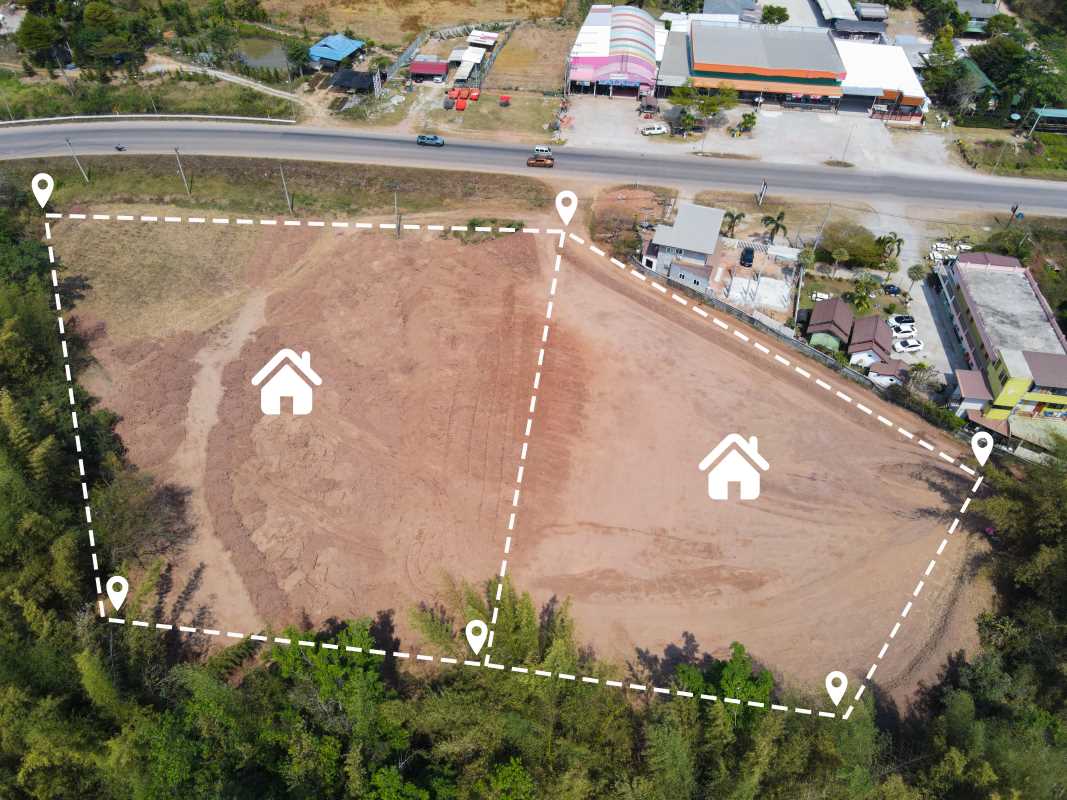Disagreements over property lines can quickly turn into stressful and emotional situations. Boundary disputes often arise when fences, landscaping, or other structures blur the lines of where one property ends and another begins. These issues can get worse if not approached in a constructive and legal manner. Dealing with a boundary dispute requires a clear understanding of your property rights, effective communication, and, in some cases, legal action. We're outlining the steps to address and resolve boundary disputes with neighbors while minimizing conflict and moving close to a fair outcome.
Understand the Roots of the Dispute
Boundary disagreements usually stem from misunderstandings about property lines or changes to the landscape. Problems might emerge after new construction, the installation of fences, or disputes over shared resources like driveways or trees. Property surveys conducted before your home purchase define boundary lines, but over time, these lines may become unclear due to natural changes or alterations by previous homeowners.
Common boundary disputes include:
- Questioning the accuracy of a fence that doesn’t appear to align with survey stakes.
- Shared ownership issues over a tree growing on the property line.
- Arguments over who is responsible for maintaining a shared driveway.
- Claims of encroachment due to structures that overlap property lines.
Understanding the exact cause of your dispute helps focus efforts on finding a resolution and prevents unnecessary disagreements.
Review Your Property Deed and Survey
A copy of your property deed or plat map provides information about the legally defined boundaries. These documents, often included in your closing paperwork when you purchased the home, explicitly outline property lines. A property survey conducted by a licensed surveyor adds precise measurements and helps settle questions regarding the exact location of boundary markers.
Check with your county’s records office or property appraiser’s office for another copy of your deed or survey. Accessing these records establishes clear facts to base discussions with your neighbor and strengthens your position if legal proceedings become necessary.
Open a Constructive Dialogue With Your Neighbor
Talking face-to-face is often the best first step to resolving a boundary dispute. Start by approaching your neighbor in a calm and friendly manner to discuss your concerns. Focusing on solutions rather than accusations reduces the likelihood of tensions escalating and opens the door to cooperation.
Consider framing the conversation around shared goals like maintaining property values or fostering a peaceful neighborhood. Discuss the survey and any historical agreements regarding the boundary to identify potential misunderstandings. Asking questions or offering to work together on a solution shows good faith effort, which may encourage your neighbor to do the same.
Documenting your conversations establishes a record of your attempts to address the issue amicably.
Hire a Professional Land Surveyor
If discussions stall or disagreements persist, a licensed land surveyor is necessary. Surveyors use specialized equipment to measure and mark exact property lines on-site, providing clarity about ownership. Their findings result in updated maps that reflect the property boundaries based on current measurements.
Hiring a surveyor can also help address disputes involving overlapping fences, encroachments, or unclear easements. Once the survey is complete, both parties receive objective documentation that leaves little room for interpretation.
Professional surveys may cost a few hundred to several thousand dollars, but the investment saves time and money compared to prolonged legal conflicts. Sharing survey costs with your neighbor, if they are willing, further reduces the expense and fosters collaboration.
Explore Mediation as a Solution
When discussions with your neighbor don’t lead to a resolution, mediation offers an effective alternative to litigation. Mediation involves a neutral third party who helps both sides negotiate and reach a compromise. Mediators focus on creating mutually agreeable solutions, which makes this process faster and less adversarial than going to court.
Many communities provide mediation services for free or at a low cost through local governments or nonprofit organizations. Check with a community dispute resolution center in your area for guidance. Mediation is often particularly beneficial for disputes involving long-standing relationships with neighbors, as it strives to preserve harmony while solving the issue.
Understand Easements and Encroachments
Easements or encroachments can often complicate property boundaries, and both deserve separate attention when resolving disputes.
An easement grants another person or entity limited rights to use part of your property without ownership. For example, utility companies often have easements to access underground lines. Resolving boundary disputes tied to easements usually involves reviewing easement agreements and working with involved parties to make sure the terms are followed.
Encroachments occur when a structure occupies land not belonging to its owner. A neighbor’s shed that overlaps onto your property is an example of encroachment. Addressing these cases may require removing the encroaching structure or coming to an agreement that grants written permission for its use.
Legal advice from an attorney maintains compliance with local laws during these negotiations.
File a Quiet Title Lawsuit if Necessary
Legal action marks a last resort for boundary disputes that cannot be resolved informally or through mediation. A quiet title lawsuit asks a court to determine ownership of disputed property based on evidence presented by both sides. The ruling clarifies boundaries once and for all, bringing an end to ongoing conflicts.
Although lawsuits are often seen as adversarial, they sometimes represent the most effective means of obtaining finality. Courts rely on surveys, deeds, witness testimonies, and expert opinions to determine. Successful lawsuits make sure that boundary disputes no longer interfere with your property rights, allowing you to enjoy your home without restrictions.
Prevent Future Boundary Disputes
Once your dispute is resolved, taking steps to avoid similar issues prevents frustration later. Installing permanent boundary markers, such as concrete stakes or landscaping features, creates visible reminders of property lines. Both parties need to understand and respect these lines to reduce misunderstandings.
Maintaining open lines of communication with neighbors and consulting surveyors before major property changes also minimizes conflict. Written agreements about shared resources, like fences or trees, further protect both parties from disagreements over maintenance or ownership responsibilities. Investing time upfront to document these decisions strengthens neighborly trust and prevents disputes from recurring.
This information does not constitute legal or financial advice. Please consult a qualified professional for advice tailored to your specific situation.
 (Image via
(Image via





